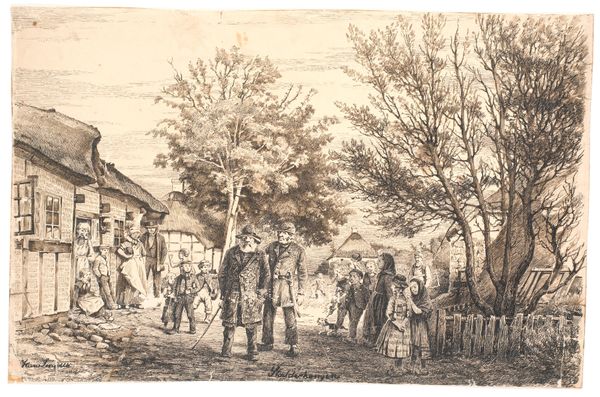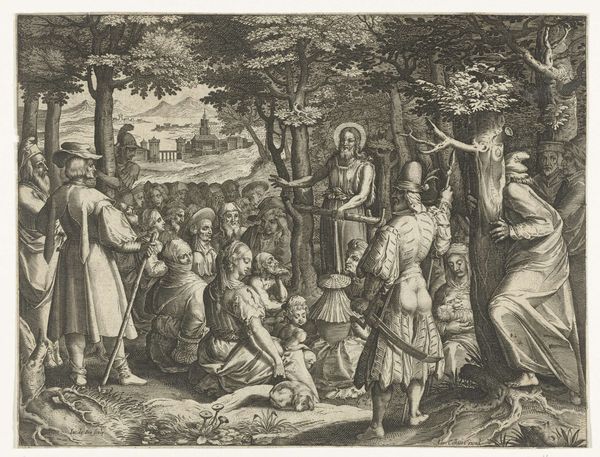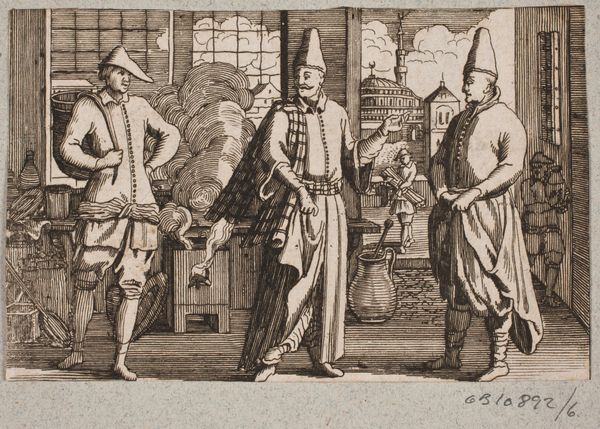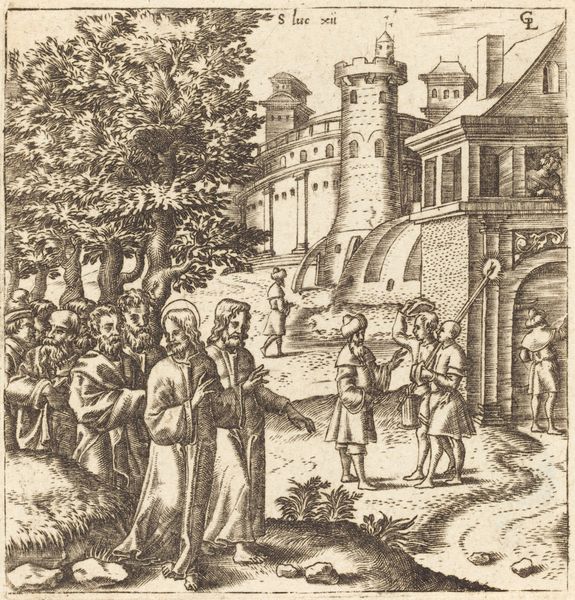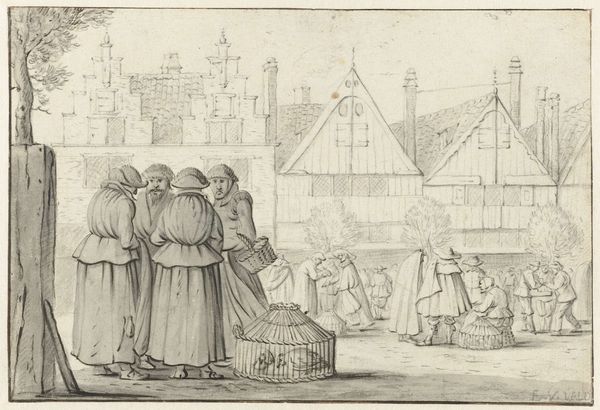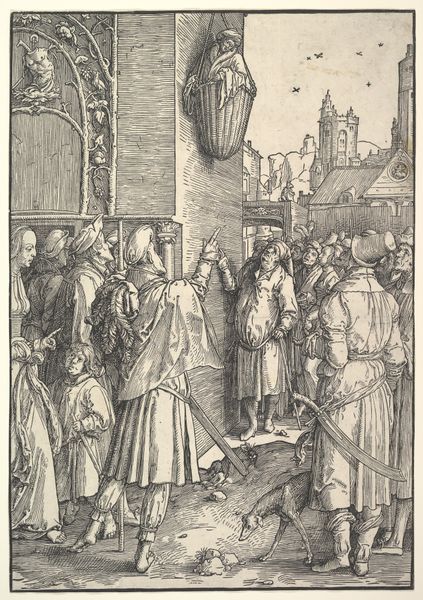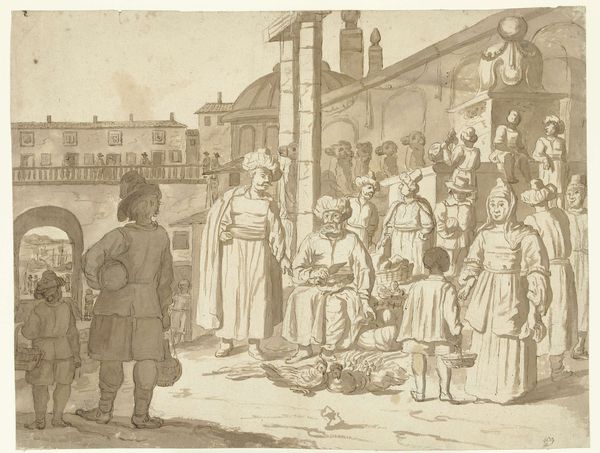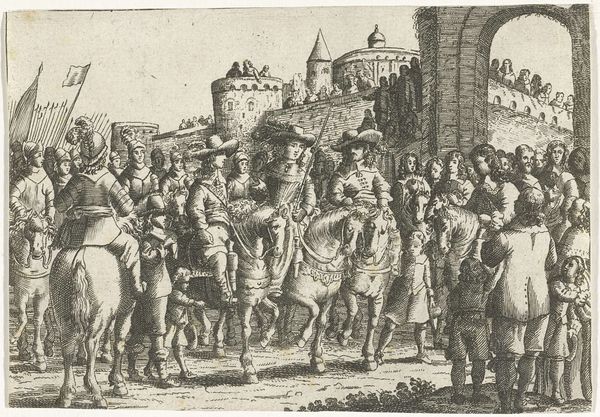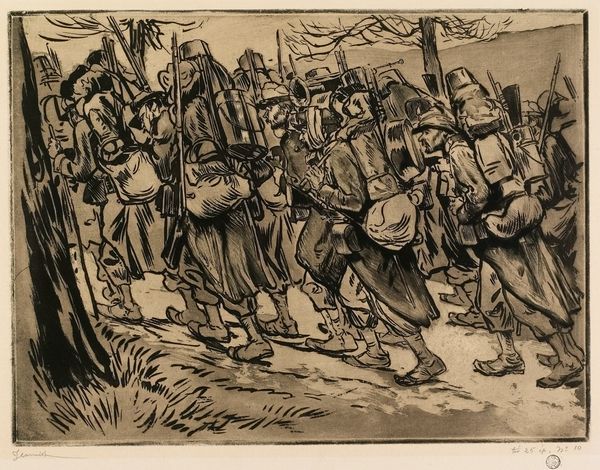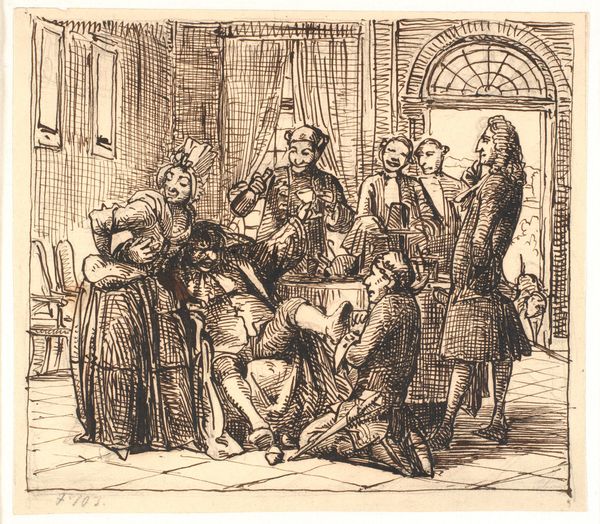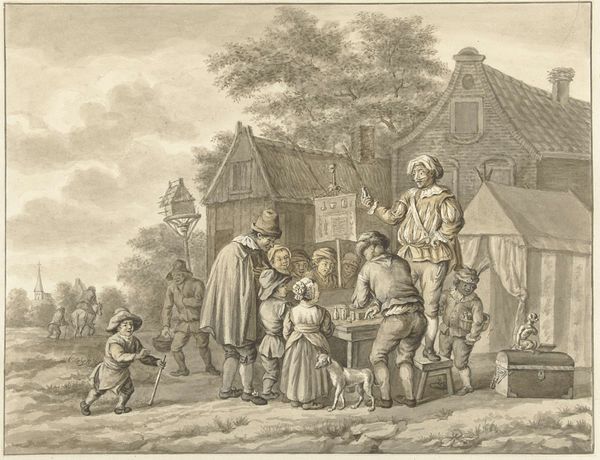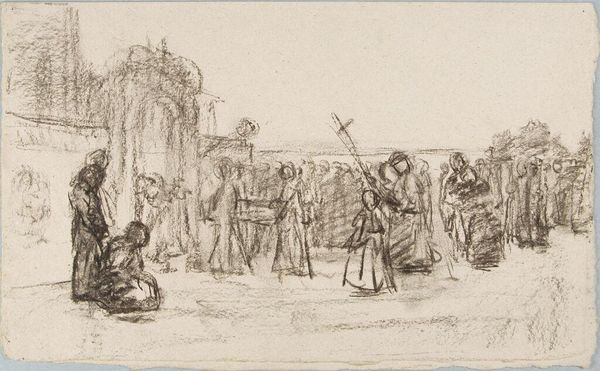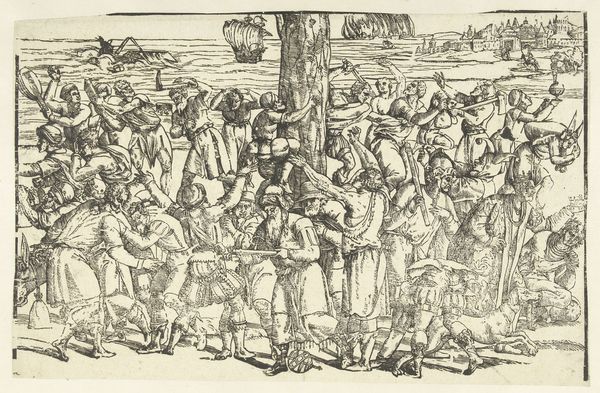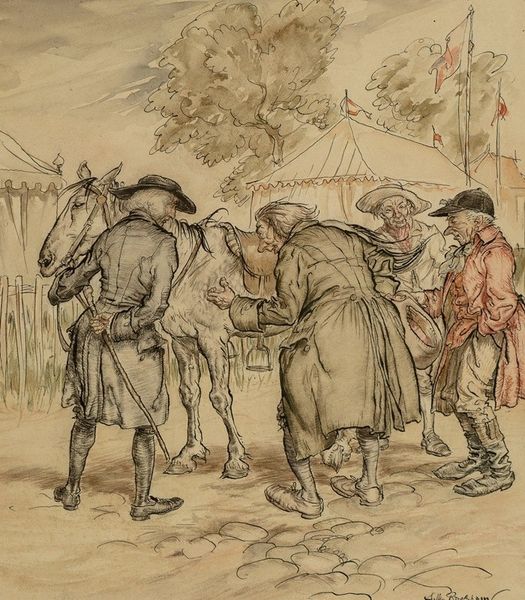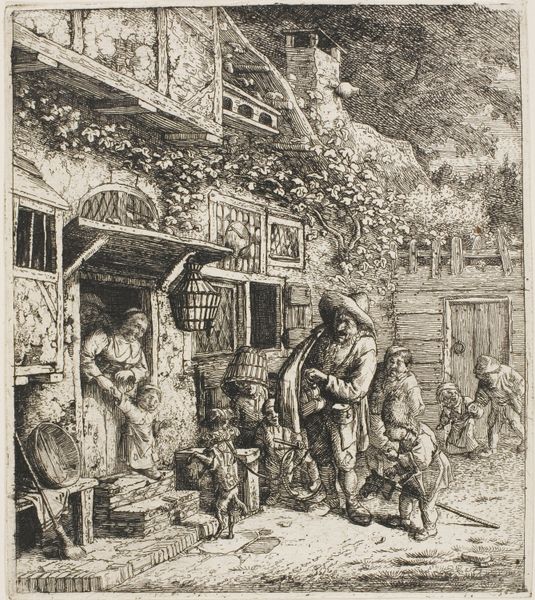
oil-paint
#
oil-paint
#
landscape
#
oil painting
#
folk-art
#
naive art
#
russian-avant-garde
#
genre-painting
Dimensions: 66.5 x 88.5 cm
Copyright: Public domain
Editor: So, this is Boris Kustodiev's "At the Fair," painted in 1906. It's an oil painting, and the colours feel so bright and cheerful. All the people bustling about create this vibrant scene. What strikes you most about this work? Curator: The painting is a fascinating example of how artists at the time grappled with representing Russian identity. Consider that Kustodiev painted this just before the major upheavals of the Russian Revolution. How do you think paintings like this played a role in shaping ideas of national culture during this period? Editor: It almost romanticizes it, doesn't it? Makes it feel like this is a record of what was, or maybe what people wanted to believe was still there? Curator: Precisely. The vibrant colours and focus on everyday life, as opposed to, say, political struggle or poverty, definitely contribute to that effect. And the art world also wanted to see something representative. We see a romanticized and idealized vision of the past presented during a time of rapid change, particularly industrialization and urbanization, almost a nostalgic vision. Do you find this 'naive art' appealing or problematic in that way? Editor: It's a bit of both. The charm is undeniable, but it's important to recognize what's being left out of the picture. Curator: I agree entirely. These artistic choices served very specific cultural and social purposes, solidifying some elements of national identity while neglecting others. Editor: It really does change the way I see it now, realizing how much history is packed into this seemingly simple fairground scene. Curator: Indeed. It prompts us to consider how art shapes our understanding of the past and influences collective memory. I'll have to remember the function of visual representation during tumultuous periods.
Comments
No comments
Be the first to comment and join the conversation on the ultimate creative platform.
